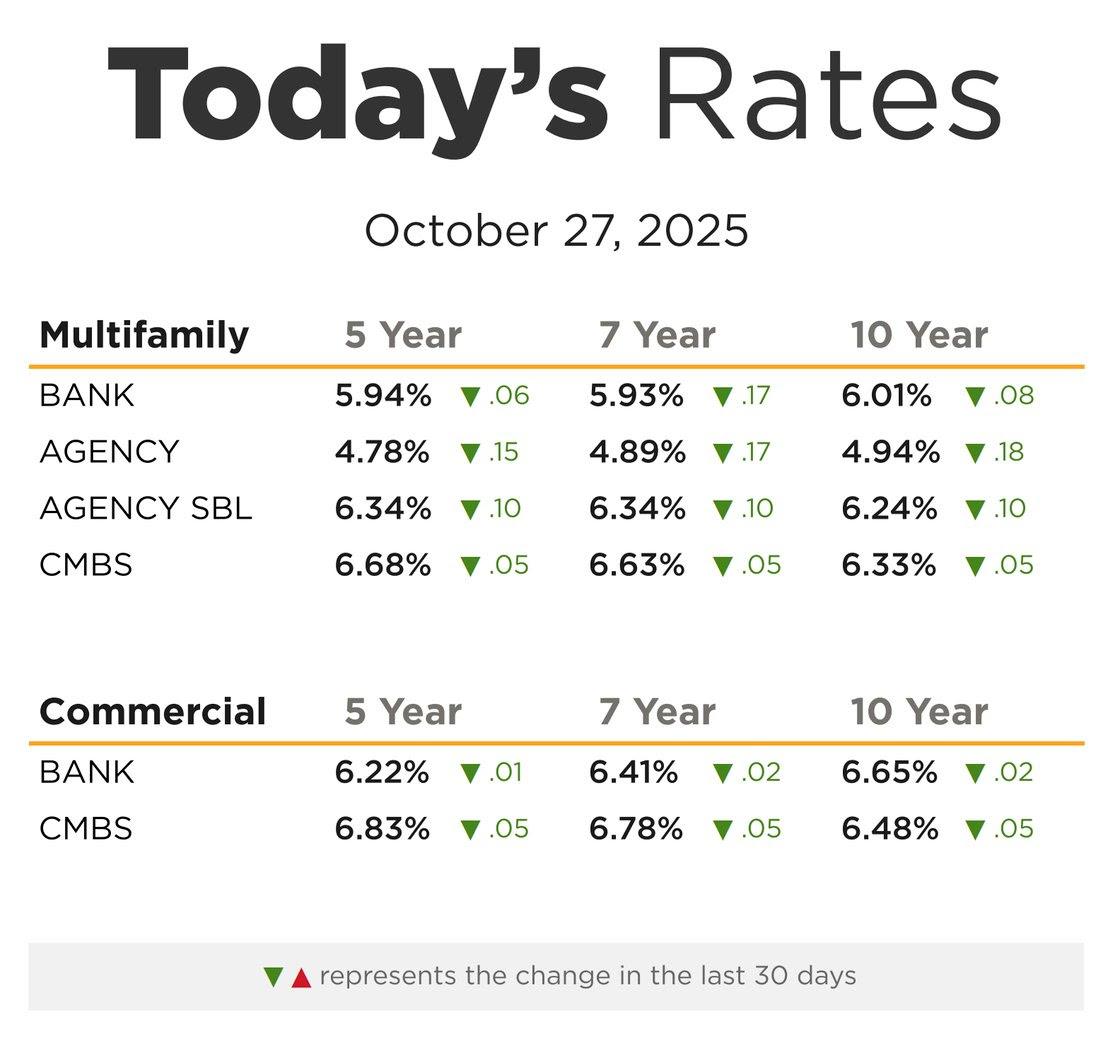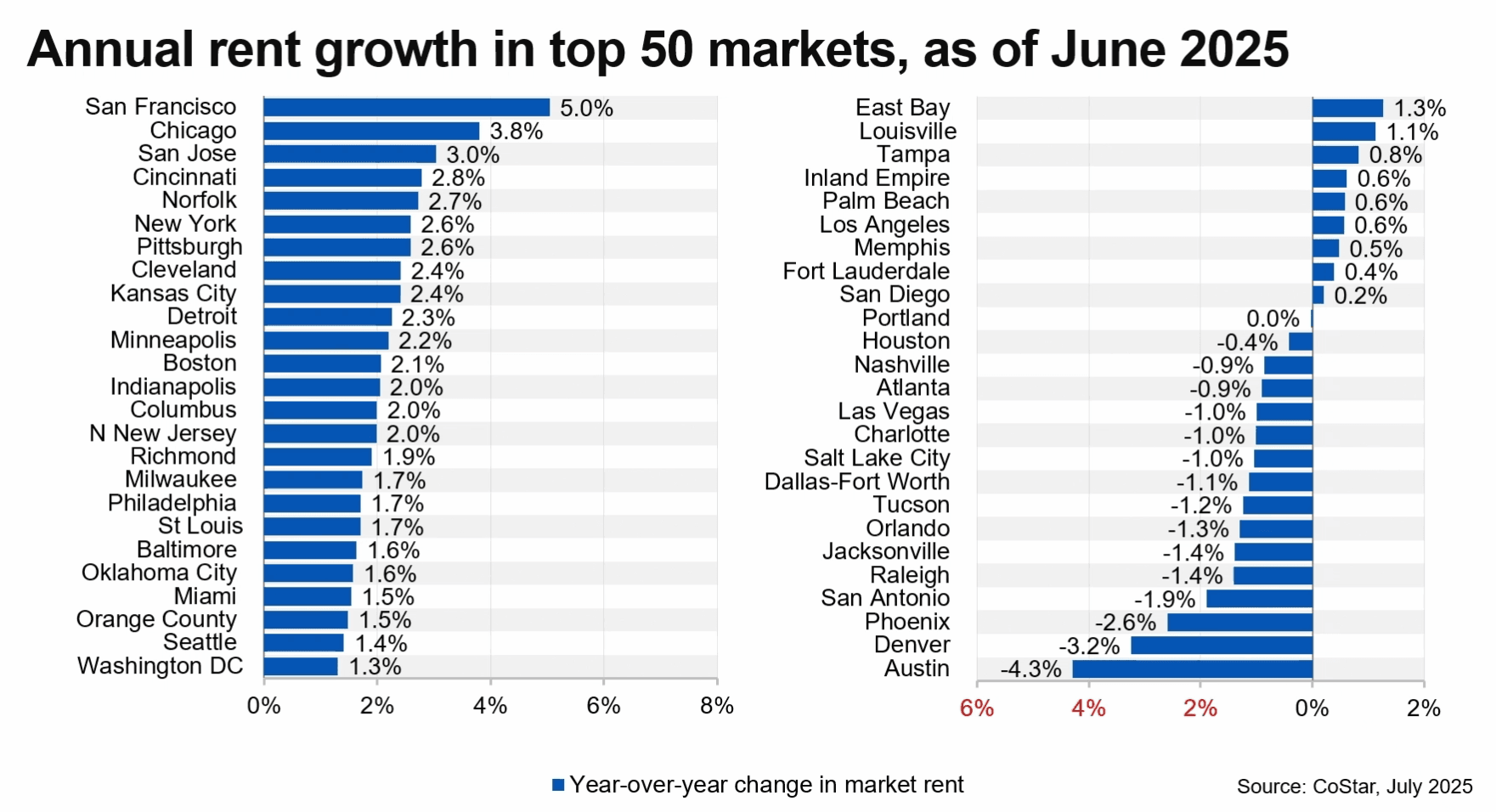Multifamily investments have proven to be one of the most resilient commercial real estate property sectors over the last several years. Even in challenging economic conditions, vacancy rates hover around all-time lows while rents continue to rise in many markets.
Although multifamily investing requires some homework, buying multifamily buildings can be more straightforward than other commercial buildings for sale. Let’s examine why multifamily buildings are a growing gateway for first-time multifamily investors.
What is Multifamily Property?
A multifamily property is a residential building that has more than one unit. Common types of multifamily investments include:
- Duplex (2 units)
- Triplex (3 units)
- Fourplex or Quadruplex (4 units)
- Townhouses and row houses
- Apartments
- Condominiums
- Cooperatives or Co-ops
- Student housing
- Mobile home parks
- Senior housing
- Assisted living facilities
Multifamily Investments vs. Single-Family Investments
First-time CRE investors often opt for single-family investments without considering other rental property options, such as multifamily or apartment buildings for sale. While each residential subtype has pros and cons, there are several distinct characteristics to know about multifamily property.
For example, every unit in a multifamily building has a unique address and usually a private entrance. Multifamily units have individual kitchens, bathrooms, living rooms, and at least one bedroom. On the other hand, some multifamily investments may offer less privacy to tenants because of shared walls or common areas such as a central laundry room or parking lot.
Single-family homes have risen in popularity recently, especially as millennials with growing families seek more space and room for remote work. However, rents in many markets are outpacing affordability, turning many to multifamily rentals instead.
Multifamily Asset Classes
Multifamily property is generally categorized into one of three asset classes:
- Class A multifamily property is a new building with state-of-the-art amenities in the best locations. These properties cost the most to buy but also command the highest rents.
- Class B multifamily buildings are in good condition with average amenities. Apartment buildings like these often lie in middle-income neighborhoods. They provide a decent balance of risk and reward, with at-market rents and a lower acquisition cost than brand-new property.
- Class C multifamily property is basic housing with minimal amenities in lower-income areas. Also known as “cash cow”apartment buildings, Class C rental property offers below-market rents and is the least expensive for an investor to purchase.
Benefits of Multifamily Real Estate
Multifamily real estate can benefit first-time and experienced commercial real estate investors.
Scaling up a real estate portfolio is much simpler with multifamily buildings thanks to their multiple units or “doors.”
Rather than one central tenant, dozens of tenants make financing easier than other commercial real estate types, and property management fees are spread across multiple units instead of a single house.
- Investors can choose from various multifamily product types, from a 4-plex to bigger apartment buildings and niche multifamily properties such as student housing.
- Investors receive multiple cash flow streams from multifamily real estate because one facility generates rental income from each unit.
- Value-add multifamily investing is easier because units can be renovated individually and generate incremental revenue from appliance rental or amenity upgrades.
- There can be less risk with investing in multifamily property over other CRE types: people always need a place to live, and renting an apartment is often cheaper than renting a house.
- Streamline the potential for passive income from multifamily by hiring a local property manager to handle the day-to-day responsibilities.
Potential Drawbacks to Multifamily Investments
While investing in multifamily real estate has plenty of benefits, there are also some potential drawbacks.
- Buying a multifamily investment requires more up-front capital because property prices are usually higher. However, the cost per unit of a multifamily building is often less than buying a single-family house.
- The amount of money needed in a CapEx account (capital expenditure) may also be more considerable to ensure emergency funds are available if multiple units require repairs simultaneously.
- Competition from other investors for well-positioned multifamily property can be more intense in some real estate markets. For this reason, many first-time CRE investors may focus on small two- or three-unit multifamily buildings to add to their portfolios.
How to Finance Multifamily Investments
Many beginner multifamily investors are surprised to learn that lenders are more likely to approve an apartment building loan than a single-family rental loan. That’s because banks focus on the monthly cash flow a property generates.
If the tenant in a house leaves, the vacancy becomes 100% with zero cash flow. On the other hand, if one unit goes vacant in a 20-unit apartment building, the vacancy rate is only 5%, with plenty of cash flow remaining to pay for operating expenses and the mortgage.
Some options for financing multifamily investments include:
- Conventional loans can be the best choice for buying small multifamily buildings with two to four units.
- Government-backed mortgage loans for multifamily assets from Fannie Mae, Freddie Mac, and the Federal Housing Administration (FHA) are good options for small multifamily properties and buildings with five or more units.
- Portfolio loans are non-conforming loans that offer multifamily investors more flexibility in loan terms and conditions. Investors can use them to finance multiple multifamily properties at the same time.
- Short-term multifamily financing options like hard money and bridge loans are best for investors buying multi-unit residential property. These are especially useful if a building requires significant renovation or the owner is repositioning other types of commercial real estate, like turning a hotel into a multifamily property.
Best Markets for Investing in Multifamily in 2024
Some real estate markets are better than others for buying multifamily property—cities with strong population growth and a diversified economy should perform best in the years ahead.
Here are some of the top cities for potential multifamily investing based on current market performance, per Crexi Intelligence:
Multifamily Trends for 2024
Multifamily has outperformed almost every other asset class of commercial real estate. Looking ahead, three key trends to consider when investing in multifamily property are:
- Construction delays and the economic feasibility of new multifamily developments in some cities slow the delivery of new buildings, creating an imbalance between supply and demand. Investors can expect prices to rise over the next several years due to demand from tenants and other real estate investors.
- Millennials are a vital renter demographic and may continue to turn to multifamily as a place to live as single-family homes become more expensive.
- Secondary markets may offer more affordable multifamily properties with better yields and cash flows. Inbound migration from expensive urban areas to small, more affordable cities keeps population growth healthy and local economies robust.
The Bottom Line
Although multifamily investing may seem complicated to first-time CRE investors, the opposite is usually true. Multifamily buildings come in all shapes and sizes and can be easier to finance than other income-producing real estate types. Buying multifamily property is also one of the easiest ways for new commercial real estate investors to start and grow a rental property portfolio.
Source: Why New Buyers Start with Multifamily Investments
Receive Market Insights
Periodic analysis on rents, pricing, cap rates, and transaction activity across Chicago and key suburban markets.



